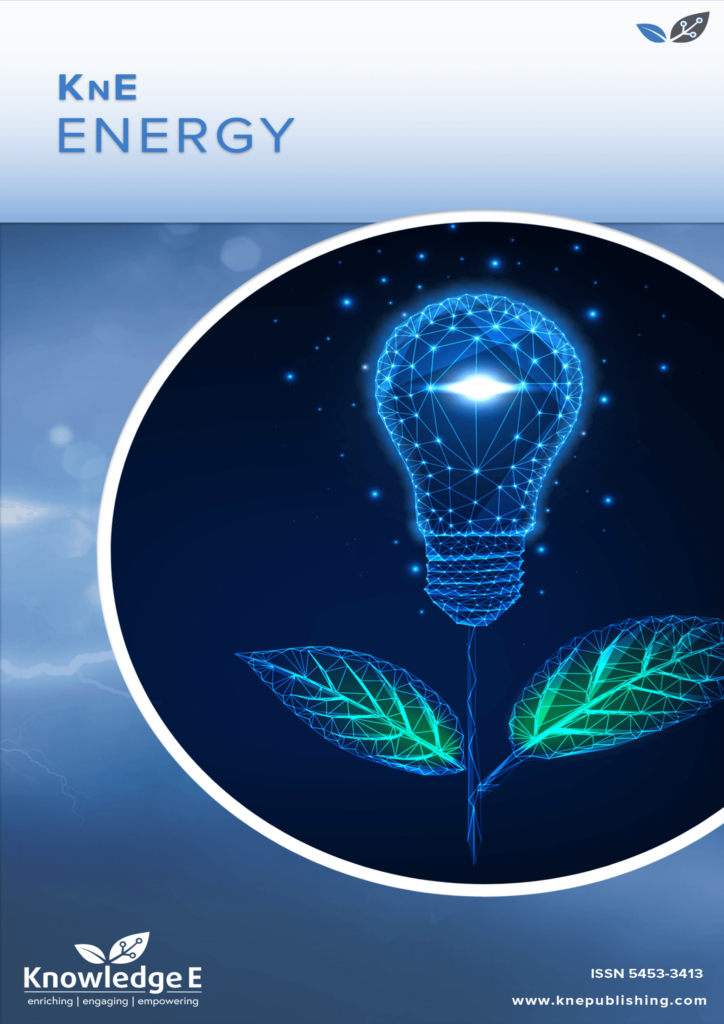
KnE Energy
ISSN: 2413-5453
The latest conference proceedings on energy science, applications and resources
Study of the Effect of Radiation Dose Rate on the Stability of Various Organochlorine Pesticides
Published date:Apr 17 2018
Journal Title: KnE Energy
Issue title: The 2nd International Symposium "Physics, Engineering and Technologies for Biomedicine"
Pages:401–408
Authors:
Abstract:
Abstract irradiated at dose of 10 kGy with dose rate varied from 8.3 ⋅ 10−3 up to 2.33 Gy/sec. It is found that the shape of the degradation degree relationship on dose rate is similar for different OCPs in polar and non-polar solvents (hexane, 2-propanol) and does not depend on the concentration of initial substance. The maximum of the OCP degradation degree is registered in the dose rate range of 0.23-0.43 Gy/sec. A lognormal distribution is considered as a function best fitting the experimental data. The OCP degradation mechanism could be explained by the ratio of active and recombined particles along the gradient of ionizing radiation intensity.
Keywords: organochlorinated pesticide; irradiation, dose and dose rate of gammaradiation; radiation degradation; functional dependence
References:
[1] Mel’nikova T., Polyakova L., Oudalova A. Assessment of organochlorine hydrocarbons transformation in contaminated agricultural products and foodstuffs under gamma-radiation // Journal of Physics: Conf. Series. 2017. V. 784. doi:10.1088/1742- 6596/784/1/012036
[2] Mel’nikova T.V., Polyakova L.P., Oudalova A.A. Application of bioassay to assess toxicity of radiolysis products of organochlorinated pesticides // Collection of articles on the materials of the scientific and practical conference with international participation “Environmental, Industrial and Energy Security – 2017” (September 11 - 15, 2017) / Ed. By Yu. A. Omelchuk, N.V. Lyamina, G.V. Kucherik. – Sevastopol: SevSU, 2017. – P. 882-885 [in Russian]
[3] Bachman S., Gieczynnska //J. Effect of gamma irradiation on pesticide residues in food products// Agrochem.: Fate Food Environ., Proc. Int. Symp. IAEA and FAO, Rome. – 1982. - June 7-11. – P. 313-315.
[4] Pikaev A.K. Sovremennaya radiatsionnaya khimiya. Osnovnyye polozheniya. Eksperimental’naya tekhnika i metody [Modern Radiation Chemistry. Basic provisions. Experimental techniques and methods]. Moscow, Nauka Publ., 1985, 375 p. (in Russian).
[5] M. P. da Silva, M. Vieira. Degradation of alachlor herbicide by gamma radiation from cobalt-60 in aqueous and alcohol solution //J. Radioanal Nucl. Chem. - 2009. 281:323–327.
[6] Hamada M., Kawano E., Kawamura S. and Shiro M. Radiation- and photo-induced degradation of five isomers of 1,2,3,4,5,6-hexachlorocyclohexane // J. Agric. Biol. Chem. – 1981. – V. 45(3). - P.659-665.
[7] Sherman W.V., Evans R., Nesyto E. et.al. Dechlorination of DDT in solution by ionizing radiation// Nature. – 1971. – V.232. - P.118-119.
[8] Mel’nikova T.V., Polyakova L.P., Kozmin G.V. Stability of Organochlotinated Pesticides in Solutions under Effect of g-Irradiation // J. Radiation Biology and Radioecology. - 2001. - V.41(6). - P. 683-687. [in Russian]
[9] Woods, A.K. Pikaev. Applied Radiation Chemistry. Radiation Processing. - Wiley, New York, 1994. – 240 р.
[10] Pshezhetsky S.Ya. Mechanism of radiation-chemical reactions. – Publ. «Khimiya», 1968. - 368 p. [in Russian]
[11] Ecological chemistry / Ed. By F. Corte. Translated from German. – Moscow, Mir Publ.,1996. – 396 p. [in Russian]
[12] Borovikov V. Statistika. The art of analyzing data on a computer. For professionals. - St. Petersburg: Publ.Peter, 2003. - 688 p. [in Russian]